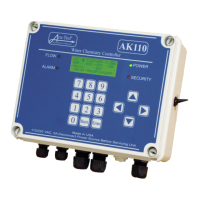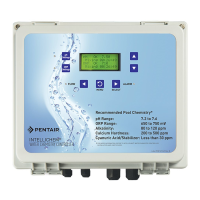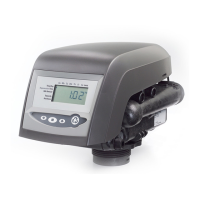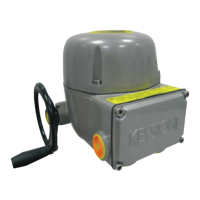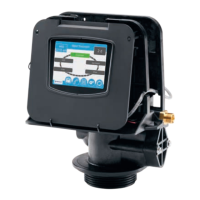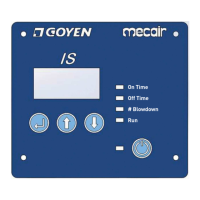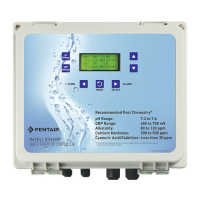32 / 84
industrial heat tracing solutions
EN-RaychemNGC30UIT2Programming-AR-H5818602/16
3.3.4 CONTROL MODES DEFINITIONS
On/Off
The NGC-UIT2 monitors the control temperature and compares it to the setpoint. If the control
temperature is above the setpoint by more than the Dead Band value (see page 35) the relay
output is turned off. If the control temperature falls below the setpoint temperature, the output is
turned on. The control temperature is defined as the lowest RTD temperature input value for that
Circuit.
Proportional
This algorithm monitors the control temperature of the Circuit and compares it to the setpoint
temperature. If the control temperature is at or below the setpoint temperature, then power is
applied to the heater with a duty cycle of 100%. If the control temperature is equal to or greater
than the control setpoint temperature +4°F, then the relay output will have a duty cycle of 0%. The
control temperature is constantly monitored, and the output duty cycle is adjusted proportionally
once per second. See Appendix A for additional information on Proportional Control.
Soft-Start Feature
This feature is a time-ramped soft start that reduces surge current produced by heaters at
startup. When a solid state output relay is first turned on, the duty cycle is ramped from 0 to 100%
in 2.5% (25 millisecond) increments over a 40 second period. The update rate for each step is fixed
at 1 second.
This automatic feature is included only when using SSRs as an output device. It is incorporated
into all control modes (On-Off, Proportional, PASC, Always On). If an output has been off for more
than 10 minutes, the soft-start algorithm will reset and be activated the next time the SSR turns
on. The soft-start algorithm will also reactivate whenever the NGC-30-CRMS boards loses power
or is reset.
PASC (Proportional Ambient Sensing Control)
PASC takes advantage of the fact that the heat loss from a pipe is proportional to the temperature
difference between the pipe and the ambient air. This is true regardless of heater type, insulation
type, or pipe size. Once the heat tracing and insulation on a pipe has been designed to balance
heat input with heat loss and maintain a particular temperature, the main variable in controlling
the pipe temperature becomes the ambient air temperature.
The NGC-30-CRM/-CRMS has a control algorithm that uses the measured ambient temperature,
desired maintain temperature, minimum ambient temperature assumption used during design,
and size of the smallest pipe diameter to calculate how long the heater should be on or off to
maintain a near-constant pipe temperature.
Always On
The relay output is switched on (user override), turns on the power to the heater and leaves it on.
IMPORTANT: Monitor the pipe temperatures to avoid overheating. Alarms are still active.
Always OFF
The relay output is switched off (user override), turns off the power to the heater, and leaves it off.
IMPORTANT: Monitor the pipe temperatures for low temperature alarms. Alarms are still active.
Voltage
Voltage mode allows the NGC-UIT2 to monitor line voltage from the NGC-30-CRM/-CRMS boards.
The NGC-30-CRM/-CRMS must have an NGC-30-CVM connected to the line current sensor input
when selecting voltage mode. As a result, this channel of the NGC-30-CRM/-CRMS cannot be
used to control an output device. But an RTD can be connected to this channel’s input to set up an
additional temperature monitoring Circuit. For an NGC-20 controller, the voltage mode is not an
option since this is a standard feature.
Monitor Only
This is the default mode that allows temperature monitoring for the Circuit. This means no output
device has been selected.

